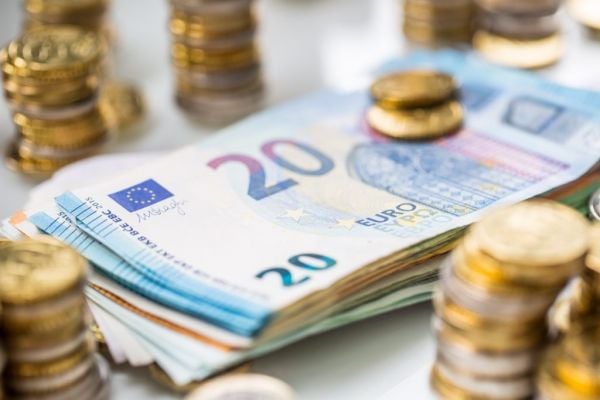US consumer prices barely rose in May and the annual increase in inflation was the smallest in more than two years, though underlying price pressures remained strong, supporting the view that the Federal Reserve would keep interest rates unchanged on Wednesday while adopting a hawkish posture.
The smaller-than-expected rise in the Consumer Price Index (CPI), reported by the Labour Department on Tuesday, reflected decreases in the costs of energy products and services, including gasoline and electricity.
But rents remained sticky and prices of used cars and trucks rose further.
The report was published as Fed officials began a two-day policy meeting.
'Rate Hikes'
"The moderate slowing provides the Fed room to pause its rate hikes this week," said Kathy Bostjancic, chief economist at Nationwide in New York.
"However, if economic data continues to surprise to the upside and inflation remains sticky, the door is open for another rate hike in the coming months, as soon as July."
The CPI increased 0.1% last month after gaining 0.4% in April.
Gasoline prices dropped 5.6%, while electricity declined for a third straight month. Utility gas also cost less.
But food prices rose 0.2% after being unchanged for two consecutive months as fruits and vegetables, nonalcoholic beverages and other food products became more expensive.
Meat and fish, however, were cheaper, while egg prices fell 13.8%, the most since January 1951.
It cost more to dine out.
CPI Increases
In the 12 months through May, the CPI climbed 4.0%.
That was the smallest year-on-year increase since March 2021 and followed a 4.9% rise in April.
The annual CPI peaked at 9.1% in June 2022, which was the biggest increase since November 1981, and is subsiding as last year's large rises drop out of the calculation.
Economists polled by Reuters had forecast the CPI would gain 0.2% last month and increase 4.1% on a year-on-year basis.
President Joe Biden welcomed the moderation in prices. "While there is more work to do ... I've never been more optimistic that our best days are ahead of us," Biden said in a statement.
Stocks on Wall Street rose, with the S&P 500 and Nasdaq indexes hitting fresh one-year highs. The dollar fell against a basket of currencies.
US Treasury prices rose after the data.
Gradual Slowdown
Data this month showed a resilient labour market, with nonfarm payrolls increasing solidly in May. While the unemployment rate rose to a seven-month high of 3.7%, that was from a 53-year low of 3.4% in April.
Economists believe the gradual inflation and labor market slowdown gives the Fed room to skip an interest rate hike on Wednesday for the first time since March 2022 when the U.S. central bank embarked on its fastest monetary policy tightening campaign in more than 40 years.
The Fed, which has hiked its policy rate by 500 basis points in this tightening cycle, is expected to leave the door open to further rate increases.
Economists argue the Fed should pause further rate increases while assessing the impact of the steps it has taken so far to cool demand.
Overall inflation is decelerating, thanks to energy and food costs.
Food commodity prices have dropped back to levels seen prior to Russia's invasion of Ukraine in February 2022.
Commodity prices fell 0.2% in May after rising 0.6% in the prior month.
But inflation is proving to be sticky excluding these volatile categories, and remains well above the Fed's 2% target.
The so-called core CPI increased 0.4% in May, rising by the same margin for the third straight month. The cost of services rose 0.3% after gaining 0.2%.
Owners' equivalent rent (OER), a measure of the amount homeowners would pay to rent or would earn from renting their property, rose 0.5% for a third straight month.
Other Industries
But with the rental vacancy rate rising to a two-year high in the first quarter and independent measures showing rents on a downward trend, a slowdown is expected this year.
Rent measures in the CPI tend to lag the independent gauges by several months.
Airline fares fell 3.0%. Services excluding energy rose 0.4%, matching April's gain.
According to economists' calculations, prices of core services outside housing climbed 0.2% after edging up 0.1% in April.
The so-called super core is being monitored by policymakers, though they place more emphasis on the corresponding measure in the Personal Consumption Expenditures price index data.
Used cars and trucks increased 4.4% after advancing by the same margin in April.
The rise, which reflected the delayed impact of increases in auction prices during winter and early spring, contributed to core goods prices rising 0.6% for a second straight month.
But household furnishing dropped 0.6%, the first decline in nearly two years and also the largest decrease since August 2009.
'Inflation Fight'
Beyond May, however, overall core inflation is expected to slow, driven by a moderation in rents and resumption in price declines for used cars and trucks.
In the 12 months through May, the core CPI climbed 5.3%.
That was the smallest rise since November 2021 and followed a 5.5% increase in April.
"We expect a more noticeable deceleration in core prices in the coming months," said Michael Pugliese, a senior economist with Wells Fargo in New York.
"That said, directional progress should not be confused with mission accomplished. There is a lot of ground to cover in the inflation fight, which should keep the Fed from cutting rates until 2024."
Read More: US Retail Sales Miss Expectations, But Core Sales Strong
News by Reuters, edited by Donna Ahern, Checkout. For more retail stories, click here. Click subscribe to sign up for the Checkout print edition.






